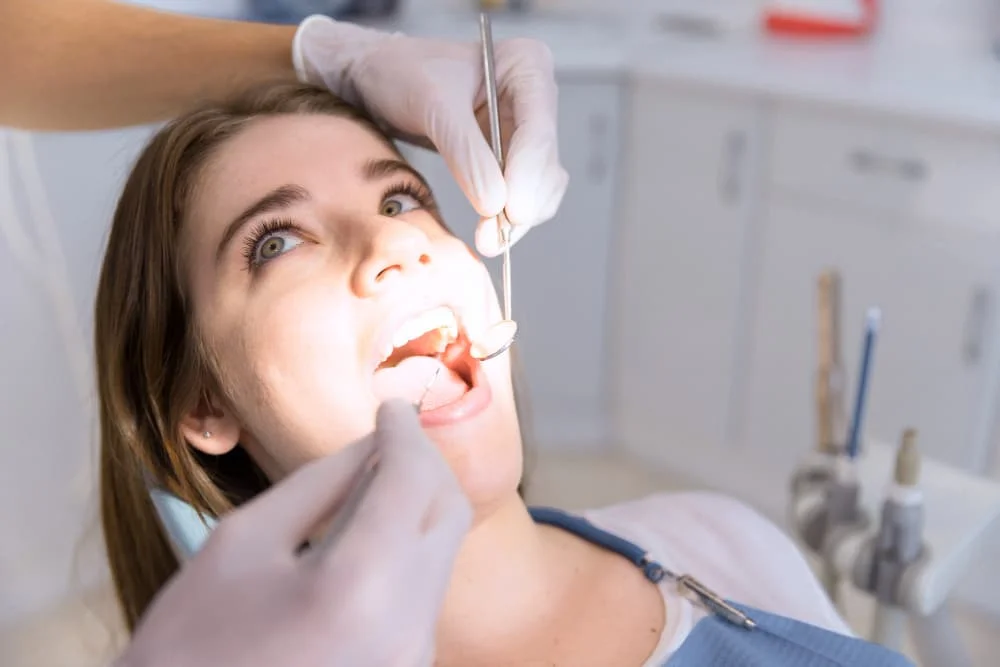Are your wisdom teeth causing discomfort? You’re not alone! Many people between the ages of 17 and 25 experience pain and irritation as these teeth emerge. Wisdom teeth pain can interfere with daily activities like eating, talking, and even sleeping. But what causes this pain, and how can you find relief?
In this guide, we’ll cover everything you need to know about wisdom teeth pain—including its causes, symptoms, and treatment options.
What Is Wisdom Teeth Pain?
Wisdom teeth, also known as third molars, are the last set of molars that typically emerge between ages 17 and 25. Most people have four wisdom teeth:
✔ Two in the upper jaw
✔ Two in the lower jaw
However, because they are the last teeth to develop, they often struggle to find enough space, leading to pain, swelling, and discomfort. This pain can range from mild irritation to severe throbbing, depending on how the teeth grow and whether they are impacted.
Why Do Wisdom Teeth Cause Pain?
Wisdom teeth pain occurs when these teeth don’t have enough space to fully emerge or when they grow at an incorrect angle. Here are the most common reasons for discomfort:
✔ Impacted Teeth: When wisdom teeth are trapped under the gum or jawbone, they can cause pressure, swelling, and pain.
✔ Infection (Pericoronitis): Food and bacteria can get trapped around partially emerged teeth, leading to infection, swelling, and bad breath.
✔ Tooth Decay: Since wisdom teeth are hard to reach, they are more prone to cavities, which can cause pain.
✔ Gum Inflammation (Gingivitis): Inflamed gums around wisdom teeth can become tender, swollen, and painful.
✔ Misalignment: If a wisdom tooth grows at an angle, it can press against other teeth, leading to pain and potential crowding.
✔ Cyst Formation: In rare cases, fluid-filled cysts can develop around an impacted wisdom tooth, damaging nearby tissues and causing pain.
Common Symptoms of Wisdom Teeth Pain

Not sure if your discomfort is caused by wisdom teeth? Here are the most common symptoms to watch for:
✔ Throbbing pain or discomfort at the back of the mouth
✔ Swollen, red, or tender gums
✔ Jaw pain or stiffness
✔ Bad breath or a bad taste in the mouth
✔ Difficulty opening the mouth fully
✔ Pain when chewing or biting down
✔ Swelling in the face or jaw
If you notice persistent pain, swelling, or infection, consult a dentist as soon as possible.
Home Remedies for Wisdom Teeth Pain
Wisdom teeth pain can interfere with your daily life, making eating, talking, and even sleeping difficult. Fortunately, there are several effective home remedies that can provide temporary relief. However, if your pain is persistent or severe, visiting a dentist is essential for a long-term solution.

🛑 1. Numb the Pain with a Cold Compress
✔ Wrap an ice pack in a towel and hold it on the painful area for 10-15 minutes.
✔ Helps reduce swelling and numb the pain.
✔ Repeat as needed, but avoid direct contact with the skin.
🌿 2. Clove Oil for Natural Pain Relief
✔ Clove oil has antiseptic and numbing properties.
✔ Dip a cotton ball in a few drops and gently apply it to the painful area.
✔ Avoid swallowing it—just let it work its magic!
🍵 3. Soothing Peppermint Tea
✔ Brew peppermint tea, let it cool, then sip it slowly.
✔ Or use it as a mouth rinse to calm inflammation.
✔ Works great for reducing swelling and discomfort.
🧂 4. Salt Water Rinse to Kill Bacteria
✔ Mix ½ teaspoon of salt in warm water and rinse your mouth.
✔ Helps to disinfect the area and reduce swelling.
✔ Use it 2-3 times a day for best results.
🧄 5. Garlic’s Antibacterial Power
✔ Crush fresh garlic and apply it gently to the painful area.
✔ Its natural anti-inflammatory properties can reduce swelling and fight infection.
💊 6. Over-the-Counter Pain Relievers
✔ Medications like ibuprofen or acetaminophen can offer temporary relief.
✔ Follow dosage instructions carefully.
🥣 7. Eat Soft, Easy-to-Chew Foods
✔ Avoid hard or crunchy foods that could make the pain worse.
✔ Instead, stick to soups, mashed potatoes, yogurt, or smoothies.
🪥 8. Keep Your Mouth Clean
✔ Gently brush your teeth with a soft-bristled toothbrush.
✔ Avoid brushing too hard near the painful area.
✔ Floss carefully to remove trapped food particles.
These home remedies can provide temporary relief, but if your pain is severe, it’s time to see a dentist!
When Should Wisdom Teeth Pain Be Taken Seriously?

Some wisdom teeth pain can be managed at home, but certain symptoms should not be ignored. If you experience any of the following, seek immediate dental care:
🚨 Persistent, Throbbing Pain – If your pain is getting worse, not better, it could signal infection or an impacted tooth.
🚨 Swelling in the Jaw or Face – This may indicate a serious infection that needs professional treatment.
🚨 Difficulty Swallowing or Opening Your Mouth – This could mean the infection is spreading.
🚨 Fever or Chills – A sign that your body is fighting an infection.
🚨 Bad Breath or Foul Taste in Your Mouth – Could indicate an abscess or gum infection.
🚨 Bleeding or Pus Around the Tooth – A serious symptom that should be treated ASAP.
🚨 Swollen Lymph Nodes in Your Neck – Could be your body’s warning sign of an infection.
🚑 Why Immediate Action Matters
Ignoring wisdom teeth pain can lead to:
❌ Severe infections
❌ Jawbone damage
❌ Spreading bacteria to other parts of your body
🔹 Solution? Don’t wait until the pain gets unbearable. A dentist can diagnose the issue and recommend the best treatment!
Take Control of Your Wisdom Teeth Pain!
✅ Try home remedies for temporary relief.
✅ Watch for warning signs that need professional attention.
✅ Schedule regular dental check-ups to prevent bigger problems.
Wisdom teeth pain is common, but you don’t have to suffer! Take action today for a pain-free smile.
Wisdom Teeth Extraction: What to Expect and How to Recover Faster
Wisdom teeth removal is a common dental procedure, often necessary when these teeth cause pain, swelling, infection, or crowding. Some people need them extracted for orthodontic or prosthetic reasons. If you’re preparing for the procedure, here’s everything you need to know—from what to expect during extraction to recovery tips and potential complications.

Is Wisdom Tooth Extraction Painful?
One of the biggest concerns people have is whether wisdom tooth extraction hurts. Good news: the procedure is performed under local anesthesia, which means the area is completely numbed, and you won’t feel pain during extraction.
After the anesthesia wears off, you may experience mild discomfort or soreness, but this can be managed with pain relievers. Most people feel better within a few days.
How Are Wisdom Teeth Removed?
The extraction method depends on whether your wisdom tooth is fully erupted, partially emerged, or impacted. Here’s what happens during the procedure:
1️⃣ Examination and X-Ray – Your dentist will take an X-ray to evaluate the tooth’s position and surrounding tissues.
2️⃣ Anesthesia – Local anesthesia is administered to numb the area, ensuring a painless experience.
3️⃣ Tooth Removal
- If the tooth is fully erupted, it can be easily removed with dental forceps.
- For impacted or partially erupted teeth, the dentist may make a small incision in the gum. In some cases, the tooth may need to be sectioned into smaller parts for easier removal.
4️⃣ Stitches (If Needed) – If a surgical incision is made, stitches may be used to help the area heal.
5️⃣ Gauze Application – A sterile gauze pad is placed over the extraction site to control bleeding. You’ll need to bite down gently on it for about 30–45 minutes.
Wisdom Teeth Recovery: Dos and Don’ts
Most people recover within a few days to a week. Following these aftercare instructions will help you heal faster and avoid complications.
First 24 Hours: What to Do
✅ Keep the Gauze in Place – Follow your dentist’s instructions and replace the gauze if needed.
✅ Rest and Avoid Strenuous Activities – Overexertion can lead to increased bleeding and swelling.
✅ Use Cold Compresses – Apply an ice pack to the cheek for 10–15 minutes at a time to reduce swelling.
✅ Stick to Soft Foods – Eat cool, soft foods like yogurt, mashed potatoes, and smoothies.
❌ Avoid Rinsing, Spitting, or Drinking Through a Straw – This can dislodge the blood clot and cause dry socket, a painful condition that delays healing.
❌ Skip Smoking and Alcohol – Both can interfere with healing and increase the risk of infection.
Recovery in the Following Days
✅ Take Medications as Prescribed – If your dentist prescribed pain relievers or antibiotics, take them as directed.
✅ Warm Saltwater Rinses – After 24 hours, rinse your mouth with warm salt water (½ teaspoon salt in a glass of warm water) 3–4 times a day to prevent infection.
✅ Maintain Oral Hygiene – You can brush your teeth, but avoid the extraction site to prevent irritation.
✅ Monitor Your Healing – Swelling and minor discomfort are normal and should gradually improve.
Final Thoughts
When performed by a skilled dentist or oral surgeon, wisdom tooth extraction is a straightforward and routine procedure. With proper aftercare and hygiene, most people recover quickly and return to normal activities within a few days.
🔹 Follow your dentist’s advice to avoid complications.
🔹 Listen to your body and don’t ignore unusual symptoms.
🔹 Be patient—complete healing may take 1–2 weeks, but most discomfort subsides within a few days.
Got an upcoming extraction? Follow these tips, and you’ll be on the road to a smooth, pain-free recovery!






